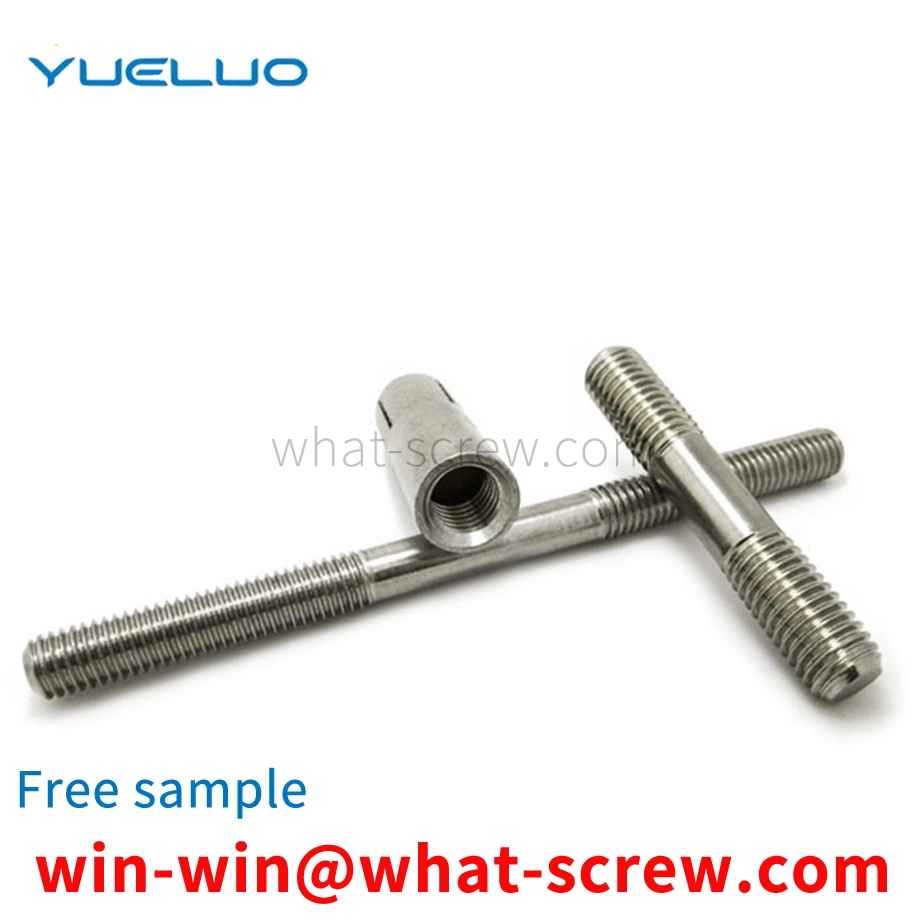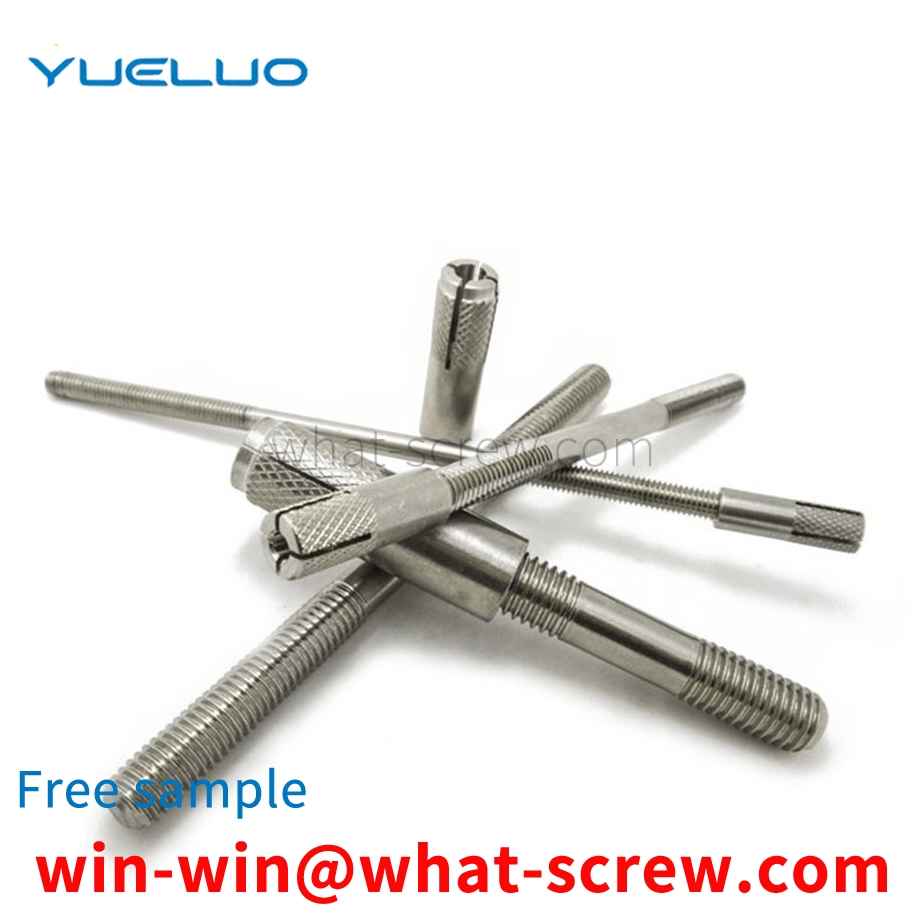Generally, the most commonly used material on the market is iron. The iron one is known as carbon steel. It is punched out or turned. After being manufactured, it is in its natural color. In order to prevent rusting, it is necessary to Electroplated. The stainless steel rivet nuts do not need electroplating. In the case of iron, the color of electroplating is generally determined by the customer, and the color of the electroplating depends on what color the customer needs. There are also some requirements for salt spray time. Some electroplating colors have a higher salt spray time, and some electroplating, less rust in a few hours. Another point is to see whether the customer needs to export the product. Generally, the export needs to be environmentally friendly, and some domestic ones also need it, but most of them are not needed.
The product structure in the known technology includes a T-shaped bolt with a longitudinal section, and a polygonal nut matched with the bolt. The bolt is divided into two parts: the screw and the screw head. The screw head is placed at one end of the screw to form an integral part. The radial length of the tightening surface of the screw head is greater than the radial length of the screw, and its axial length is less than the axial length of the screw; The solid surface is a polygon, and now a hexagon is commonly used. The periphery of the base of the nut and the screw head has a number of elastic surfaces corresponding to the polygon; the periphery of the axial screw is provided with an external thread matching the internal thread of the nut. In actual use, the fastener of this structure can be tightened by using a conventional screw, such as a wrench. Therefore, its anti-theft performance is poor and it is not suitable for occasions with special requirements.
Code name and standard number of inch thread commonly used abroad Mark code name country and standard number Remarks BSW standard Wyeth coarse thread series, general purpose cylindrical thread British standard BS 84 inch thread with a profile angle of 55° BSF standard Wyeth fine thread series, General Purpose Cylindrical Thread Whit.S Additional Whit.S Optional Series, General Purpose Cylindrical Thread Whit Non-standard thread with Whitworth profile UN Uniform thread of constant pitch series American standard ANSI B1.1 inch thread with 60° profile angle, with Internal and external threads with standard profile (flat or rounded at random) UNC Coarse thread unified thread UNF fine thread unified thread UNEF superfine thread unified thread UNS① Special series unified thread UNR round The uniform thread profile angle of the arc root constant pitch series is 60° inch thread, UNR, UNRC, UNRF, UNREF, UNRS with arc root are only used for external thread without internal thread UNRC arc root coarse thread Series Unified Thread UNRF Circular Root Fine Thread Series Unified Thread UNREF Circular Root Ultra Fine Thread Series Unified Thread UNRS Circular Root Special Series Unified Thread NPT② Generally used for pipe thread American standard ANSI B1.20.1 Profile angle is 60° Inch Pipe Thread NPSC Pipe Fitting Straight Pipe NPTR Pilot Connection Tapered Pipe NPSM Mechanical Connection Straight Pipe NPSL Lock Nut Straight Pipe NPSH Hose Connection Straight Pipe NPTF Dry Seal Standard Tapered Pipe Thread American Standard ANSI B1.20.3 Type I PTF-SAE SHORT Dry Seal Short Taper Pipe Thread Type II NPSF Dry Seal Standard Fuel Oil Straight Pipe Internal Thread III Type NPS1 Dry Seal Standard General Straight Pipe Internal Thread IV Type ACME③ General Purpose Trapezoid Thread American standard ANSI B1.5 Inch drive thread with 29° profile angle ① Dimensions and tolerances All diameter and pitch combinations other than the standard series are calculated using the same formula as the standard series. ② my country's 60° conical pipe thread GB/T12716-1991 is equivalent to it. ③ACME thread includes two kinds of matching trapezoidal threads, general purpose and centering, of which the general purpose thread has the same performance as the trapezoidal thread specified in my country's standard GB/T5796-1986.
Knurled copper nut, the specification is M5X8X12, the outer circle is 8.0MM, and the height is 12MM. Material: C3604 (ROHS PASS) brass. The thread still guarantees 6H accuracy. This knurled copper nut is used in power tools. Unlike other knurled copper nuts, the diamond pattern of this knurled copper nut is located in the middle of the product, and the diamond-shaped mesh knurled wheel edge The large outer circular step surface is rolled out of diamond-shaped flowers.
At present, the nut is used as the main body through the riveting connection with the gasket, which is more and more widely used in the industrial field, especially the automobile industry. The gasket connected with the nut has two types: spring gasket and flat gasket. After the nut is tightened, the washer gives the nut an elastic force, which is pressed against the nut to make it not easy to fall off; and the function of the flat washer is to increase the contact area between the nut and the coupling, increase the friction force, reduce the pressure per unit area and protect the surface of the connected parts. Not damaged, stop the nut from loosening. Therefore, gaskets have a wide range of applications in the field of fastening connections, and it is more and more important to improve production efficiency, reduce production costs, and meet growing demands.
We have many years of experience in the production and sales of screws, nuts, flat washers, etc. The main products are: extra large national standard nuts, GB823 screws, gasket POSH bolts, nylon copper posts and other products, we can provide you with suitable fastener solutions for you .



















 Service Hotline
Service Hotline




